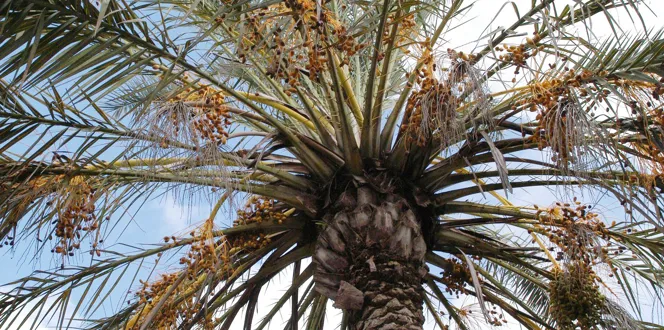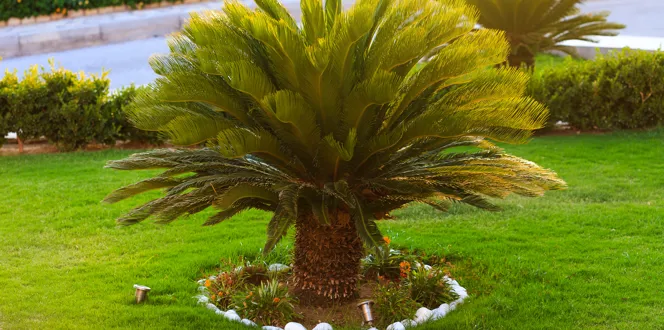Flourishing palm trees instantly remind us of paradise. So, the last thing we want is for these tropical treasures to become a source of stress.
That’s why Lorraine F. reached out when some of her queen palm trees didn’t look healthy. Lorraine said, “It almost looks like they are dying, but continue [to grow] with stunted leaves and branches.”
If Lorraine’s palm problem sounds familiar, read on to learn why palm leaves turn yellow (specifically queen or majesty palms). Plus, get steps to help treat your ailing palm tree
The Lowdown on Palm Trees with Yellow Leaves
When we hear the word evergreen, we automatically think of those prickly plants, shining green amid a sea of snow. But get this–palm trees are evergreen, too. That means their leaves, or fronds, should keep their green glow all year.
Yellow palm leaves are sometimes—but not always—a cause for concern. Let’s look at how you can tell the difference.
Why are my palm tree leaves turning yellow?
Here’s how to tell the difference between natural and worrisome yellow palm leaves or fronds.
As palms grow, a few old palm fronds turn yellow and fall off. Generally, these are on the bottom of the tree. As long as most of the palm stays green and eventually weeds out the yellow, all is well.
But if the yellow leaves linger, that’s usually a red flag. Sometimes, palm leaves turn yellow if the tree’s soil is lacking essential nutrients, like nitrogen, manganese or magnesium. These all help the tree stay green and grow properly.
Alternatively, a pest or fungus could be causing your palm tree leaves to yellow. Depending on the cause, an infestation can be tricky to fix.
Why do majesty or queen palms get yellow leaves?
Majesty and queen palms are prone to the same stressors mentioned above. Compared to other palms, these trees thrive in moisture-rich soil with plenty of nutrients. So, start there!
How to Treat Yellow Leaves on a Palm Tree
Here’s a step-by-step guide to diagnosing and fixing your palm tree’s yellow tint.
- Perform a soil test–a surefire way to figure out if any vital nutrients are missing. You can DIY with a kit from the local home and garden center, your arborist can do it for you, or you can send a sample to your local cooperative extension.
- Based on the test results, replenish your plant’s soil with missing nutrients with a slow-release fertilizer. Your arborist can recommend one with the right balance of nutrients to fill the gaps in your tree’s soil. Don’t forget! If you have a queen or majesty palm, you may need a more nutrient-rich fertilizer.
- Moving forward, keep your palm on a proper fertilization schedule. Plan to fertilize three or four times per year.
- If the tree’s soil is in good shape, look for signs of pests or fungi. Droopy, withering leaves paired with root decay could point to a fungus called Ganoderma root. But if you see webs or a sticky film on palm fronds, it's probably a pest.
- Talk to your arborist about any pest or fungus symptoms to determine the best plan for your tree.





